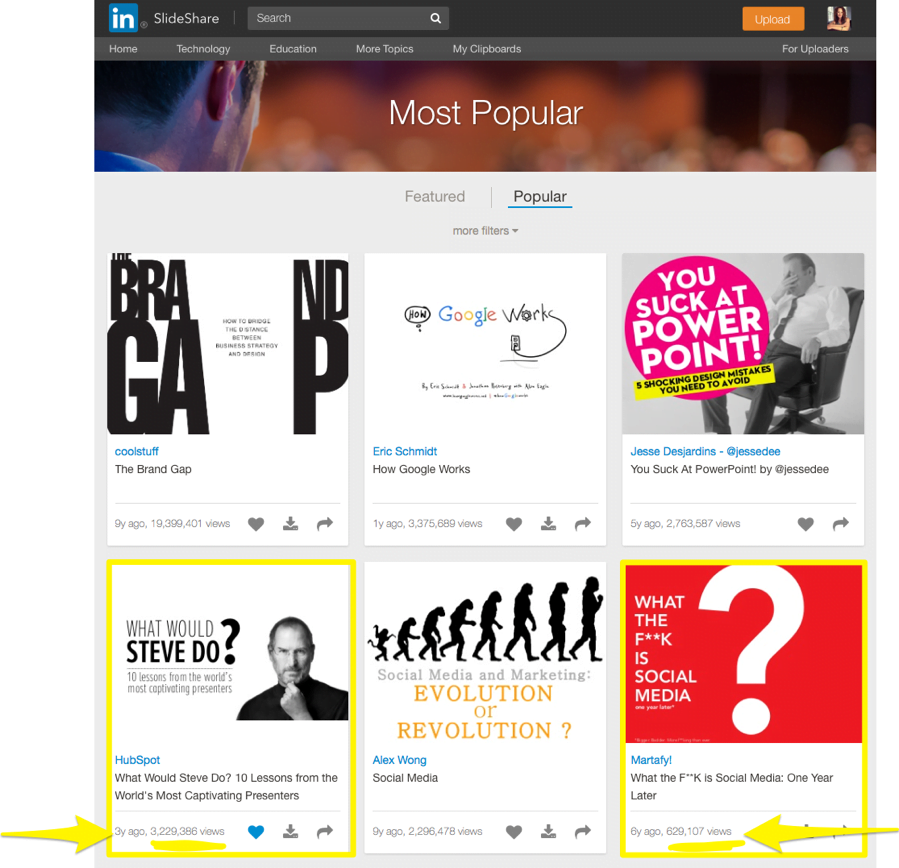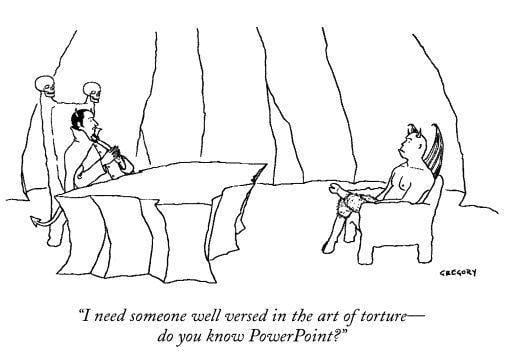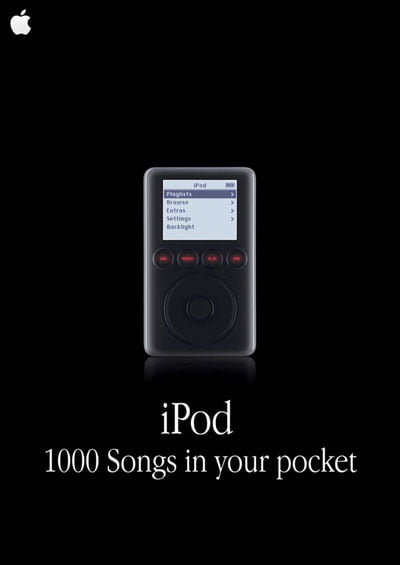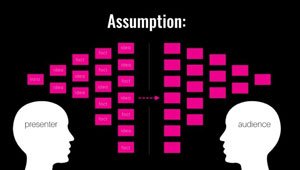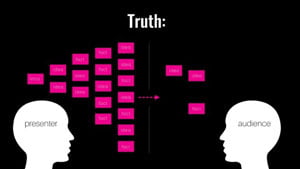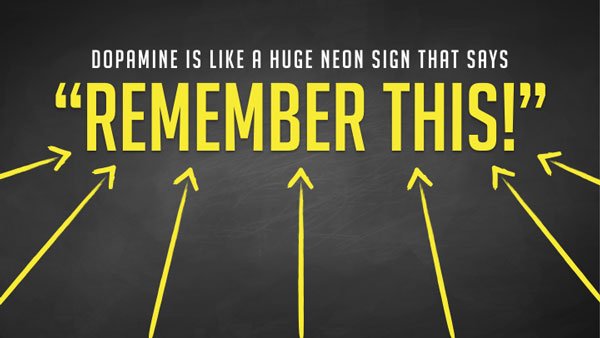The 3 Keys to Acing the Pitch – ANY Pitch!


In our ‘10 Pillars of Public Speaking‘ series, we talk about Aristotle’s pillars of rhetoric, outlining the importance of emotion in persuasion. In this article, Marta delves into the importance of using emotional storytelling to help persuade your audience. ‘Acing the Pitch’ isn’t just about using persuasion in a business sense, but in everyday life as well.
A Person can have the greatest idea in the world – completely different and novel – but if that person can’t convince other people, it doesn’t matter.
Gregory Burns, Neuroscientist
No matter where you are in your career or what industry you’re in, there’s one essential skill that will determine how successful you become and how many of your goals you achieve (or don’t): your ability to be persuasive.
You can have the most awesome idea in the world and the most innovative business model ever. You can be incredibly talented and experienced—a bonafide “expert” in your industry. You can have a slew of fancy letters after your name and a diploma from a prestigious university.
But if you can’t convey your ideas with clarity, confidence, and conviction, you’re not going to get very far
Your ability to “ace the pitch” can be the difference between sealing the deal or walking away empty-handed; between skyrocketing your career or stagnating; and between exploding your business or watching it fail.
I know this to be true, because I have personally struggled with this issue, and over the past decade, I have worked with hundreds of entrepreneurs, executives, freelancers, and small business owners who have also “been there, done that.”
But everything changed once I discovered the massive difference between giving a pitch—and acing it.
In the span of a few short years, I went from an unemployed mother-of-two to the VP of Marketing at a promising tech startup. From there, I went on to help raise over $100 Million in venture funding; launch a global industry conference that attracts tens of thousands of attendees (as well as the world’s most admired speakers and influencers); publish two of SlideShare’s most popular presentations of all time; and put at least one awesome, billion-dollar brand on the map.
These days, I enjoy running my own business, mostly from home, teaching others how to create and deliver exceptionally effective presentations and pitches that get results. And I LOVE it!
But none of that would be possible if I hadn’t learned (and mastered) the three essential lessons I’m about to share with you.
THE THREE KEYS TO ACING ANY PITCH—AND GETTING THE RESULTS YOU WANT
When I talk about “acing the pitch,” I’m not just talking about standing in front of a screen and delivering a PowerPoint presentation.
I’m talking about all of the ways in which we’re expected to share our ideas, communicate our knowledge or expertise, and “pitch” or persuade others every single day.
You may be interviewing for a job, sharing research findings with a colleague, or speaking with a blogger or journalist. You might be attending a networking event, giving feedback to an employee, or just being asked to “say a few words” at a meeting.
In all of those scenarios, you’re giving a pitch. When someone says, “Tell me a little about yourself…” or asks you what you do for a living—guess what? You’re being asked to give a pitch!
And that anxious pit you get in your stomach the moment before you have to speak; or that feeling of regret that torments you when your pitch falls flat… is perfectly normal, all too common, and totally avoidable.
Acing the pitch is about mastering the ability to capture someone’s attention, keep it, and inspire them to TAKE ACTION
And it’s also the key to succeeding in both business—and in life.
Here’s the formula to acing your next pitch
And the next one. And every one.
1) STORIES
According to psychologist Jerome Bruener, facts are 20 times more likely to be remembered if they’re part of a story.
Stories help us to relate to one another; to understand and to build connections. Stories have heroes (that we can’t help rooting for) and villains (that we can’t help despising).
Our lives are essentially a growing collection of stories
Even the most introverted among us has hundreds of stories to tell. When you’re at the water cooler telling your colleague about what you did over the weekend—you’re telling a story. When you post a photo from your trip to New York on Facebook—you’re telling a story.
Most of the conversations you’ve had today are laced with stories
Learning to apply this innate human ability to important conversations, presentations, and pitches is essential to capturing and keeping your audience’s attention. And the good news? You are a born storyteller! This isn’t a new skill you need to master, but rather, a small shift in your approach.
PRO TIP
Instead of prepping your next pitch by firing up PowerPoint, start on paper. Personally, I like to use post-it notes, because they’re small and portable. I can jot down just one idea per post-it, and I can move them around to find the best overall structure for a compelling, effective pitch.
In Ace the Pitch (the online course where I teach people how to create insanely great presentations and pitches), I teach my students how to storyboard and utilize classic three-act story structure to capture and keep their audience’s attention—and inspire action. Grab your own copy of my “Perfect Pitch Blueprint” here.
To get an even better sense of how powerful storytelling can be in a pitch or presentation, check out one of these fantastic TED Talks, all of which exemplify the most important “TED Commandment”: Thou Shalt Tell A Story.
Cameron Russell: Looks aren’t everything. Believe me, I’m a model
Susan Cain: The Power of Introverts
Brene Brown: The Power of Vulnerability
2) SIMPLICITY
When Apple first introduced the iPod to the world, they did it with five simple words and one image:
They could have said “Introducing a portable music player that weighs a mere 6.5 ounces, boasts voluminous capacity, long battery life, and has lightning-fast transfer speeds.”
That’s how a lot of companies would pitch it. But that’s not “acing” it.
Mastering the ability to simplify complex information is a powerful skill that few possess. It requires using fewer, more evocative words to convey an idea. It means eliminating anything extraneous or unnecessary (like industry jargon) and distilling your ideas down to the bare essentials.
Simplicity is essential to being heard, understood and remembered in the crowded, noisy, and distracting world which we live
Most pitches and presentations err on the side of under-simplifying information. They cram way too much data into every slide and way too many words into every sentence. They falsely assume that their audience can and will absorb every bit of information they share.
The truth is that working memory can only hold 3 to 4 chunks of new information at a time.
If you overwhelm or confuse your audience with too much “stuff,” guess what happens? They shut down. They tune you out.
Next thing you know, they’re pondering important questions like “I wonder what’s for lunch today?” and “Did any of my friends ‘like’ that photo of my kid yet?” —and they’re not picking up whatever it is you’re trying to put down.
The key to keeping your audience on the edge of their seats is make your pitch or presentation as simple as possible. Don’t make them have to think or work to grasp what it is you’re trying to say.
Because, as Confucius once said:
A confused mind says ‘NO’
PRO TIP
Keep your slides and your script simple by sticking to the 1:7:140 rule:
- 1 idea per slide
- <7 words
- <140 characters (to make sharing & remembering easy)
If you’d like to see a step-by-step tutorial on how to simplify complex data into an effective slide, check out slides 43 – 50 of this presentation.
So the first two essential keys to acing the pitch are STORIES and SIMPLICITY. But the third may very well be the most important (and most controversial) …
3) EMOTION
That’s right, emotion. That touchy-feely stuff that “has no place in business.” Except it does.
And here’s why: human beings are wired to feel. And to make decisions based on how we feel.
See, when emotion is triggered—whether it’s joy, fear, lust, anger or whatever—your brain is immediately flooded with a powerful neurotransmitter called dopamine. Dopamine regulates movement and emotional responses, and it enables us not only to see rewards, but to take action on them.
Picture it like a giant neon sign that says, “WHOA! This is important! Remember this!”
Neuroscientists have conducted studies where they compare how the human brain responds to information that is purely factual or logical, versus information that has an emotional charge. And every one of those studies shows that the areas of your brain associated with memory and motivation light up like the fourth of July in response to emotional stimuli.
Most of us believe that we make decisions based on “the facts.” We consult Google, Twitter, Facebook, Yelp, Travelocity, etc. We read consumer reports and reviews, watch YouTube videos, and check Wikipedia. We ask our friends, our neighbors, our coworkers. We post questions to Quora.com. But none of that data is going to prompt action because “it makes sense.” We’re going to take action, because ultimately we feel good about that action.
Let me put it this way: if logic alone drove humans to take action, would anybody smoke? Of course not. The fact is that emotion is the power tool of persuasive communication.
It’s literally the key to “getting the yes.” It’s the reason why average people will fork over $150 for a pair of Nikes.
Logically, they know that those shoes are not going to make them “fly” like Michael Jordan. But they make them feel like perhaps they could.
PRO TIP
Get clear on what you want your audience to think and do. But prompt them to act based on what you want them to feel.
One of the examples I use with my Ace the Pitch students is Crest toothpaste. For years, Crest has been selling toothpaste and other products aimed at “improving oral hygiene.”
Oral hygiene is not (for most people) a topic that’s rife with “emotion.” But here’s the thing: Crest isn’t just selling you toothpaste. They’re selling you a healthy, beautiful smile. And a healthy, beautiful smile is something most of us want. It’s something that we can feel!
So if a toothpaste brand can conjure up emotion and “ace the pitch”—I guarantee that so can you.



